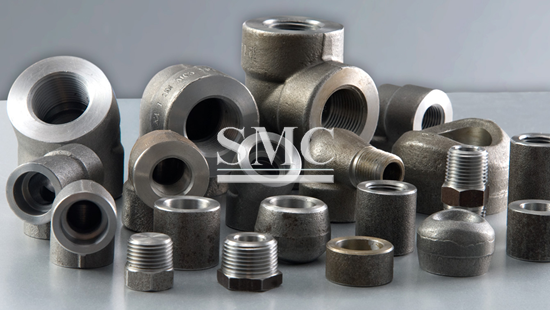
- Company overview The heart of SMC Vision & Philsophy Partnership Certifications Company culture
- Our service Design and Engineering Maintenance and Service Examine Production Line Upgrade and Transformation Storage and Logistics Processing, Trading and Distributor
- Management Our history Global responsibility Info Center
- Procurement center Internship
- Metal Steel Products Stainless Steel Products Aluminum Products Copper Products Galvanized Steel and PPGI Special Alloy Building Material
- Containers ISO Standard Container Equipment Container Storage Container Refrigerated/Reefer Container Offshore Container Container House Tank Container Container Fittings Container Trailer
- Gas Cylinder & Fire Extinguisher Cryogenic Liquid Cylinder Oxygen Gas Cylinder Storage Tank CNG Gas Cylinder LPG Gas Cylinder Hydrogen Gas Cylinder Nitrogen Gas Cylinder Industry Gas Cylinder Fire Extinguisher
- Metal Machinery Forming Machine Cutting Machine Processing Machine Bending Machine Block Machine Other Machinery Motor Spare Parts
- Mechanical Products Miscellany Mooring Equipment Marine Equipment Vehicle Industry Pressure Vessel Conveyor Belt Laser Equipment Bearing
- Electrical System Power Distribution Automation Electrical Cable Solar Power System Electric Protection System Transformer Production Line Lighting System
- Project Plastic Pipes and Pipe Fittings Fiberglass Reinforced Plastic Pontoon System
Basic Properties of Nickel
Nickel, a silver-white, hard, ductile and ferromagnetic metal element that is highly polished and resistant to corrosion. Nickel is a pro-iron element. It has the highest nickel content in the core and is a natural nickel-iron alloy. In the earth's crust, ferro-magnesia rocks contain more nickel than siliceous rocks. For example, peridotite contains 1000 times more nickel than granite, and gabbro contains 80 times more nickel than granite.
Chemical properties
Nickel is more reactive but more stable than iron. It is difficult to oxidize in air at room temperature and is not easy to react with concentrated nitric acid. The fine nickel wire is flammable, reacts with halogen when heated, and slowly dissolves in dilute acid. Can absorb a considerable amount of hydrogen.
Nickel is insoluble in water, forming a dense oxide film on the surface in humid air at normal temperature, which can prevent the bulk metal from continuing to oxidize. It can be slowly dissolved in dilute acid, releasing hydrogen to produce green positive divalent nickel ions; resistant to strong alkali. Nickel can be burned in pure oxygen, giving off a dazzling white light. Similarly, nickel can also be burned in chlorine and fluorine. No reaction occurs in the oxidant solution including nitric acid. Nickel is a medium strength reducing agent. Nickel hydrochloric acid, sulfuric acid, organic acids and alkaline solutions etch very little nickel. Nickel slowly dissolves in dilute nitric acid. The fuming nitric acid can passivate the nickel surface and is corrosion resistant. Like platinum and palladium, nickel absorbs a large amount of hydrogen during passivation. The smaller the particle size, the larger the absorption. The important salts of nickel are nickel sulfate and nickel chloride. Nickel nitrate is also commonly used in the laboratory, with crystal water, green transparent particles, and easy to absorb water vapor in the air. Similar to iron and cobalt, it is stable to water and air at normal temperature and can resist alkaline corrosion. Therefore, nickel bismuth molten alkali can be used in the laboratory.

Storage and transportation conditions
Store in a cool, ventilated warehouse. Keep away from fire and heat. The package is sealed and must not be in contact with air. It should be stored separately from oxidants, acids, etc., and should not be mixed. Explosion-proof lighting and ventilation facilities are used.
Preparation
1. Electrolysis method. The enriched sulfide ore is calcined into an oxide, reduced to crude nickel by carbon, and then purified to obtain pure metallic nickel.
2. Carbonylation process. The nickel sulfide ore is reacted with carbon monoxide to form nickel tetracarbonyl, which is decomposed by heating, and a high purity metal nickel is obtained.
3. Hydrogen reduction method. Reduction of nickel oxide with hydrogen gives metallic nickel.
4. In the blast furnace, oxygen is substituted for sulfur, and nickel ore is heated to obtain nickel oxide. The oxide is then reacted with an acid solution reacted with iron to obtain nickel metal.
5. After the ore is calcined into an oxide, it is reduced by water gas or carbon to obtain nickel.
For more information, please visit:https://www.shanghaimetal.com/Metal-18.html
For our full list of products that we offer check out our website here. Be sure to join the conversation in our LinkedIn group, Facebook, Twitter.
Try also our We Chat by scanning the QR code below.
Shanghai Metal Corporation is a trusted aluminum alloy, aluminum foil price, stainless steel price and stainless steel manufacturer, kinds of stainless steel in china.
Sunny Y.//SMC Editor

